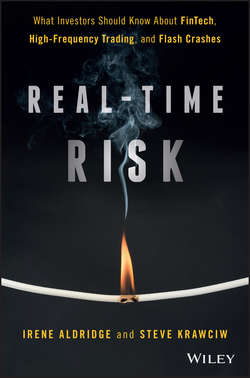Читать книгу Real-Time Risk - Aldridge Irene - Страница 8
На сайте Литреса книга снята с продажи.
CHAPTER 1
Silicon Valley Is Coming!
SOCIAL MEDIA
ОглавлениеSocial media alone creates change, and not just because of all the new tools connecting billions of individuals worldwide. People use social networks to gain immediate access to information that is important to them. The increased independence that people feel when they can access their networks whenever and wherever they want makes these networks a treasured part of the way they spend their day.
For investors, social media may mean wide access to a variety of information on the go. On the train and feel like learning the business model of some obscure public company? Not an issue. At the airport, but thought of investing in a specific municipal bond and need more information on the jurisdiction? Here it is. A successful fintech business has a social network that reaches investors both proactively and responsively. By offering a social experience, the business can provide traditional services in a setting that is consistent with the social network's way of navigating. Analyzing a customer's use of the social network allows a company to respond to clients in a tailored fashion, offering messages and ideas that are consistent with what the customer wants.
The implications of social media, however, go far beyond the communication and customer service experience a business can have with prospects and clients. Unlike news, social media is a powerful user‐generated forum where ideas collide, opinions are formed, and beliefs are floated, often completely under the radar of traditional media. The participants who offer the opinions often join in anonymously, concealing their identity in a degree of masquerade where they feel comfortable to disclose their thoughts honestly and passionately. The same degree of honesty is often impossible in our politically correct daily interactions, even with the nearest friends behind closed doors. The chatroom‐formed opinions then often trickle into the stock markets as people trade on their beliefs, putting their money where their mouths are.
Harvesting and interpreting social media content has thus been a boon for a range of financial businesses. Machine‐collected sentiment on specific stocks has been shown to predict intraday volatility and future returns. The AbleMarkets Social Media Index, for example, has consistently predicted short‐term volatility over the past six years, and is used by investors, execution traders, and risk management professionals.
Is all social media content created equal? As you have guessed it, this is very far from being the case. With proliferation of automatic social media tools, for instance, a lot of the content comprises “reposts” and “retweets” of information found elsewhere. This duplication of materials sometimes is worthwhile and reflects the copying party's agreement or endorsement of the original content. In many instances, however, duplicate content appears to be streamed simply to fill the informational void of a given social media participant's stream.
Another social media hazard is fake news. This may come in the form of individuals' posts or, much worse, via fraudulent posts on hijacked accounts of other users. A classic in the latter category was a Twitter post on the Associated Press account informing followers of an explosion at the White House on April 23, 2013.
Separating the wheat from the chaff in the social media space is not a job for dilettantes, and requires advanced machine‐learning algorithms. In today's market environment, where the profit margins are thin and every bit of information is valuable, correct inferences are critical and experience in dealing with various circumstances is worth a lot.
